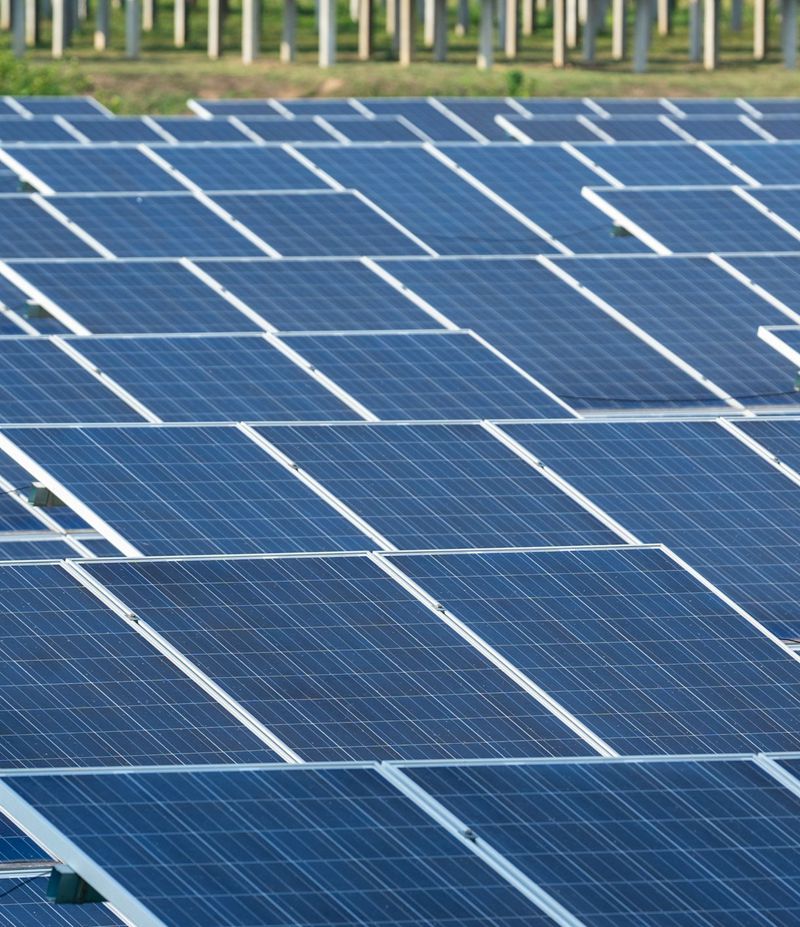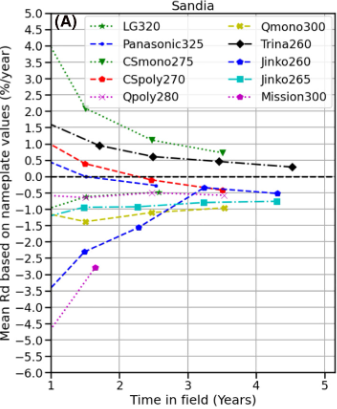According to a five-year study conducted by Sandia Labs on the degradation of solar modules shows that 13 types of modules, out of 23 tested, have an effective lifespan of more than 30 years.

Under the auspices of the United States Department of Energy, Sandia National Laboratories has just completed a five-year study on the degradation of solar modules in their early life stages. This study reviewed 834 PV modules, of 13 different types and from seven manufacturers, used in the field in three climates.
The report, which recently appeared in Progress in Photovoltaics, looked at 23 systems in total. Six of them have recorded degradation rates that will allow them to exceed the limits set by the panel's warranty, while 13 systems have demonstrated their ability to extend their lifespan beyond 30 years. The study defines “lifetime” as the period over which a panel's electrical production is greater than 80% of its initial production rate.
According to this document, the cost of modules has fallen by 85% since 2010, due to economies of scale, increased efficiency in cell design, automation of production lines, modules larger ones and changes in the BOM of components such as rear films. The report says lower costs would have helped make solar a central part of energy infrastructure in place today, but points out that drastic cuts in design costs and material changes could lead to worse energy efficiency rates. degradation, which, in turn, could offset many of the positives resulting from these cheaper modules.
The study indicates that the degradation is not at all linear over time and that seasonal variations are to be observed on certain types of modules. The average and median values of the degradation rates, respectively −0.62%/year and −0.58%/year, are consistent with the rates measured on older modules.

According to the report, the market share of different cell types has changed drastically in recent years. In 2018, conventional models with an aluminum back surface field (Al-BSF) accounted for up to 90% of global solar cell production. In 2020, the market share of Al-BSF fell to only 15%, compared to 80% of high efficiency cells such as PERC (passivated emitter back contact cell), PERL (passivated emitter back cell). locally diffuse), PERT (fully diffuse passivated back emitter cell), SHJ (silicon heterojunction cell) and TOPCon (passivated tunnel oxide contacts cell).
The researchers point out that there is little long-term field data for these new cell and module technologies. They therefore sought to overcome this lack of data by studying each of these technologies over time in the field.
Variations in nominal power ranged from −3.6% to 4% with initial power stabilization varying from −3.3% to +0.6%. Flash over voltage measurements showed variable performance, amplified depending on the season.
Overall, the research has revealed degradation rates of the same order of magnitude as the values observed from 1979 to 2014 on more expensive conventional PV technologies. The study concludes that the degradation rates of the modules do not seem to suffer from the sharp drop in costs recorded over the last ten years, at least as far as the modules studied are concerned.
If you install a ground mounted solar system in your house, you will probably be able to expect a service life for more than 30 years, and can help you not just bring back the investment for the Pitched Roof Mounting System or Durable Ballast Mounting System, but earn money from it.